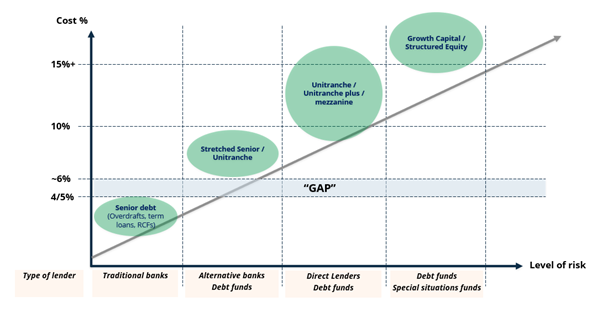
Four new banks were launched in the UK in the first ten months of the coronavirus crisis, adding to the 41 launched over the previous seven years, according to ACP Altenburg Advisory.
The debt advice providers said the figures referred to new UK banks and branches or subsidiaries of overseas banks approved by the PRA between 1 March to 31 December 2020, and represent the growing options available to businesses looking for finance as CBILS comes to an end.
With the CBILS & BBLS schemes having ended on 31 March, businesses looking to grow may need to turn to an alternative source of finance in the coming months as the high street banks are likely to decrease their lending to SMEs.
Including the four new banks launched in the last year, there have been 23 UK banks to launch since 2013, alongside 22 banks to launch in the UK either as a branch or subsidiary of an overseas bank, the advisory services company said.
These figures do not include the larger challenger banks that have launched since the credit crunch such as Shawbrook, Metro Bank and Aldermore, all providers of asset finance.
The figures show the increasing competition challenger banks are providing to high street banks in providing lending to SMEs. In addition to challenger banks, there are hundreds of debt funds looking to provide funding to growing UK SMEs.
How well do you really know your competitors?
Access the most comprehensive Company Profiles on the market, powered by GlobalData. Save hours of research. Gain competitive edge.

Thank you!
Your download email will arrive shortly
Not ready to buy yet? Download a free sample
We are confident about the unique quality of our Company Profiles. However, we want you to make the most beneficial decision for your business, so we offer a free sample that you can download by submitting the below form
By GlobalDataDan Barrett, a partner at ACP Altenburg Advisory, said: “The continued launch of new banks is gradually bringing more and more competition to the SME lending market.
“High street banks are likely to reduce their credit appetite for lending to SMEs over the short term whilst the dust settles on the vast amount of money they have lent under the BBLS and CBILS schemes. Many businesses may now need to look elsewhere for the funding they need to grow.”
“With nearly two dozen new UK banks launching in the last eight years, together with 100s of alternative lenders and debt funds, the funding options for UK businesses outside of the high street banks have never been greater.”
The three most common types of lending are asset-backed lending (ABL), real estate and cash flow. While the number of lenders and range of debt products has increased across all three types, cash flow lending has seen the biggest increase in the number of lenders and products over the past decade.
Mid-market cash flow lending

To illustrate the range of cash flow lending debt products available to borrowers, the graph below shows ACP Altenburg Advisory’s summary view of the cash flow lending market in the UK lower mid-market (debt size up to c.£75m).
The graph shows the types of cash flow product (in the bubbles) and the types of lenders (along the bottom of the chart). The X-axis shows an increasing level of credit risk and the Y-axis shows an increasing level of the cost of the funding. Fairly intuitively, as the risk increases so too does the cost of the borrowing.
While the cost of borrowing is largely a function of the level of risk that a lender is being asked to take, it is also partly related to the level of flexibility a borrower requires.
Borrowers that secure a funding package with greater amounts of flexibility, eg a debt solution tailored to the business, ample covenant headroom, lower levels of (or even zero) amortisation and/or certainty of follow on funding etc, are likely to pay a higher price for the funding.
Uni-tranche funding solutions (a hybrid debt facility that combines senior debt and subordinated/ mezzanine debt into a single facility) come with a greater degree of flexibility than more traditional debt packages (term loans, overdrafts, RCFs etc), hence the higher cost of lending.
ACP Altenburg Advisory says there is a shortage of lenders providing capital at a cost of around 4-6%. The more traditional banks, who tend to be more conservative with their lending appetite, tend to lend below 4 or 5% while the alternative banks and funds who have raised money with a certain return hurdle tend to lend with costs above 6%.
Dan Barrett said: “With more funding options available to businesses now than ever before, directors and owner-managers unsure of how to proceed should seek advice now. Working with a debt advisory firm can be critical in ensuring that your business secures the most appropriate funding deal, both for the present and the future.”







